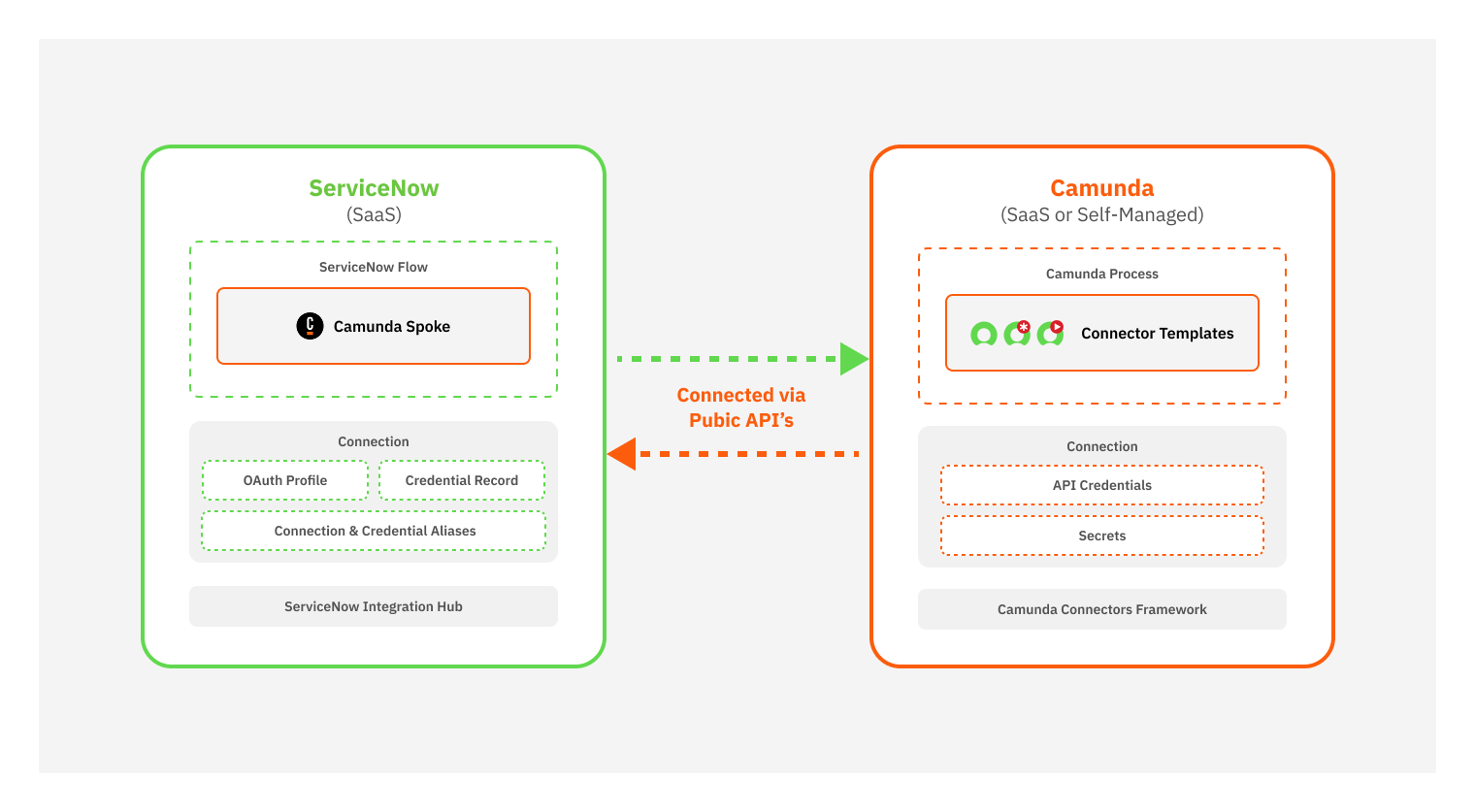ServiceNow
Use Camunda to automate workflows that interact with ServiceNow IT Service Management (ITSM), enabling seamless communication between BPMN processes and ServiceNow workflows.
Key features
The integration enables you to:
- Bi-directionally integrate Camunda and ServiceNow to orchestrate flows and processes.
- Orchestrate activities inside ServiceNow and across systems end-to-end using BPMN.
- Manage records in ServiceNow: create, read, modify, or delete any record directly from Camunda processes.
Audience
This documentation is intended for:
- Developers implementing workflows that interact with ServiceNow.
- Solution architects designing process automation across Camunda and ServiceNow.
- Administrators managing integration configuration and security.
About the integration
Camunda’s ServiceNow integration combines:
- Custom actions in the ServiceNow Camunda Spoke to start or correlate Camunda processes from ServiceNow.
- Built-in connectors and element templates to interact with ServiceNow tables and flows from Camunda processes.
Architecture

This diagram shows how Camunda and ServiceNow interact.
Integration features
The integration provides bi-directional orchestration using two main components: the Camunda Spoke and built-in connectors.
Camunda Spoke in ServiceNow
| Action | Description |
|---|---|
| Start process | Start a Camunda process from ServiceNow. |
| Correlate message | Correlate a running Camunda process instance from ServiceNow. |
| Send signal | Broadcast BPMN signals to one or many Camunda process instances. |
| Cancel process | Cancel a Camunda process instance from ServiceNow when needed. |
ServiceNow connectors in Camunda
| Connector | Description |
|---|---|
| ServiceNow Outbound Connector | Execute CRUD operations on any ServiceNow table. |
| ServiceNow Flow Starter | Start a ServiceNow flow from a Camunda process (requires ServiceNow Integration Hub Enterprise Pack). |
| ServiceNow Incident Handler | Create and manage incidents in ServiceNow directly from a Camunda process. |